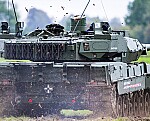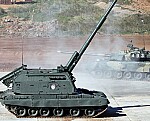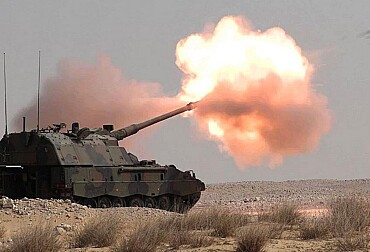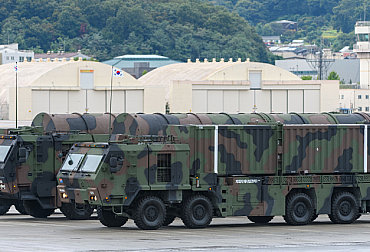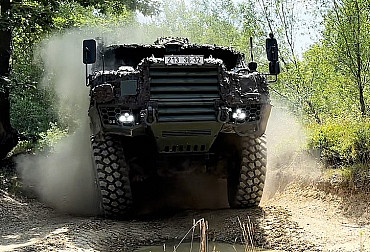Capabilities of the most famous tanks of the early 21st century: Abrams, Leopard, Leclerc and their counterparts
Since they first appeared on the front in September 1916 during the First World War, tank technology has greatly evolved. The Main Battle Tanks used by today's armies are imposing, sophisticated and extremely mobile, thanks to advances in weaponry and countermeasures. Let's take a look at how these machines are facing the new threats of modern warfare today, such as drones, as we see them being deployed in Ukraine.
The Abrams, USA
The Abrams is an American tank that has undergone numerous modifications over its long life. In service for over forty years, it entered service in 1980, this armoured vehicle has already proved its worth in the two Gulf Wars (1991 and 2003), as well as in Afghanistan.
In its latest version, the M1A2 SEPv3 Abrams benefits from a number of improvements that enable it to aim more accurately at its targets and destroy them more quickly. This tank is also equipped with an integrated fire control computer that enables the gunner to engage targets simply by pointing and firing. Thanks to this system, the tank can attack targets at long range, day and night, and even in bad weather.

The Abrams is due for another facelift, as a new version called the AbramsX is currently being developed. It should be a very capable MBT on the battlefields until 2050. Reducing the weight of this machine and making it more manoeuvrable has been one of the top priorities of its manufacturer, General Dynamics. This reduced weight is also a logistical advantage that should not be underestimated. Previous versions of this tank weighed more than 70 tonnes, so they were slower and could not be loaded onto certain landing barges, limiting their deployment abroad.
In addition, the AbramsX has a hybrid propulsion system based on both a petrol engine and an electric motor. This type of operation offers a number of advantages for the U.S. Army. The tank will be able to travel at low speed over short distances using a very quiet all-electric mode. This would help the vehicle's crew to avoid detection and possibly gain an advantage over their opponents, while saving fuel.
The Leopard, Germany
The Leopard 2 is a German tank that is very popular with many armies around the world and the second most numerous MBT in NATO Armies, after the Abrams. It has become even more famous since it was used by Ukrainian troops against Russia. Firepower, strength, protection and speed make it a very effective weapon. Military experts are full of praise for the capabilities of these armoured vehicles, and the Ukrainian experiences confirm it.
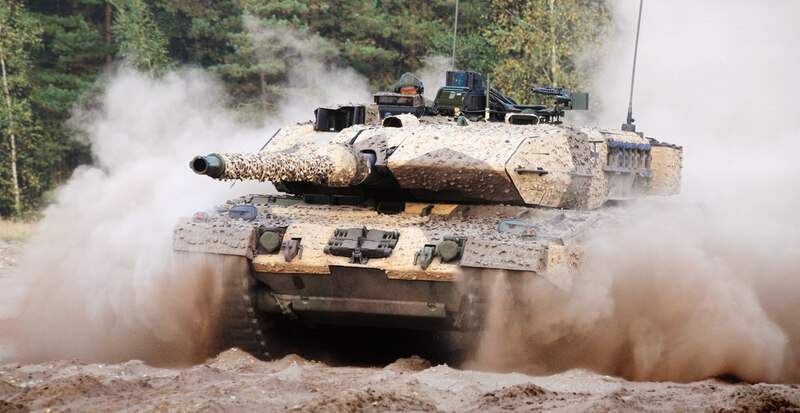
According to its manufacturer, the Bavarian company KMW, the A7+ and the A8, the latest Leopard 2 models, are ones of the most advanced battle tanks in the world. This tank is operated by a crew of four, comprising commander, gunner, loader and driver. The Leopard 2A8 is well protected against the threats of conventional and urban warfare. It has welded steel armour and composite armour at the front. The tank is equipped with Israel's Trophy active protection system, which destroys anti-tank missiles and even High-Explosive Anti-Tank (HEAT) shells. This system can also detect the enemy's location and allow the crew to attack the launch position.
On the offensive side, the tank has the L/55 120mm Rheinmetall Rh-120 cannon. It is equipped with advanced sights with new-generation thermal imagery for improved enemy targeting. It also has a sophisticated fire control system capable of automatically detecting and tracking targets.
The Leclerc, France
Named after the French Marshal Leclerc, this third-generation French armoured vehicle was designed by the GIAT industries group (now Nexter) in the 1990s. It is the French army's only Main Battle Tank currently in service. The Leclerc was designed to take on the armoured divisions of the Soviet Union during the final stage of the Cold War. After the collapse of the USSR, the tank proved its worth by being deployed for other types of mission, such as overseas operations by French troops and UN peacekeeping operations. Despite its advanced age, the Leclerc is expected to remain in service with the French army until at least 2040.

On the offensive side, the Leclerc has an F1 smoothbore gun firing 120-mm shells, a calibre also used by the Abrams, Leopard 2 or K2 tanks. In addition, the tank can fire shells made of tungsten alloy or even depleted uranium alloy, specially designed to penetrate the armour of enemy well protected tanks. The tank can also fire explosive shells with a range of four kilometres. A 12.7-mm M2HB heavy machine gun completes the Leclerc's main armament. It is mounted coaxially to the left of the F1 gun. This machine gun is supplied by a belt of 140 rounds of ammunition.
The K2 Black Panther, South Korea
To protect itself from the communist regime in North Korea, Seoul built a formidable tank. The K2, based on experience with the already very capable K1 model, was designed to offer exceptional mobility, firepower and self-defence capabilities. Equipped with a formidable arsenal, this tank is fitted with a 120-mm smoothbore cannon capable of firing enhanced kinetic energy ammunition. It also features an automatic loading system, making it easy to load ammunition even in difficult terrain. Its main guns are complemented by additional 7.62-millimetre and 12.7-millimetre machine guns, giving it enhanced defensive capabilities. The Black Panther is remarkably agile, with a maximum speed of 70 kilometres per hour and an impressive range of 450 kilometres, making it highly manoeuvrable on a wide variety of battlefields.

The tank's defensive capabilities are equally impressive, incorporating composite and reactive armour. In addition, blast panels on the ammunition rack enhance blast protection, further protecting the crew and the tank itself. The K2's armour is designed to withstand direct hits from 120mm shells fired by Leopard 2 tanks, for example. They come recently to the armament of the Polish army.
The Type 10, Japan
In 2012, the Japanese Ground Self-Defence Force received a major upgrade to its Type 90 main battle tank with the introduction of the Type 10. This fourth-generation tank surpasses its predecessor in terms of versatility, weight and speed. Its modular armour design allows the integration of different layers of armour, offering the flexibility to lighten the tank or reinforce its protection according to mission requirements.
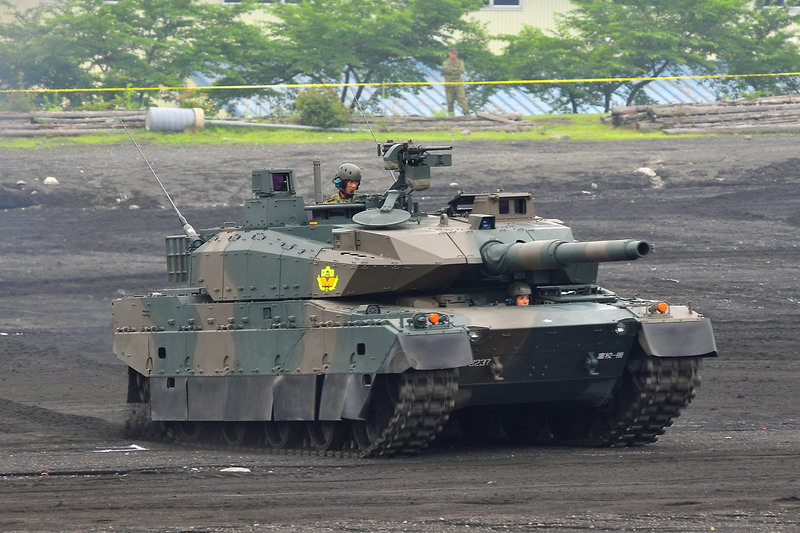
The tank is armed with a 120-mm main gun produced locally by Japan Steel Works, which replaces the German-designed gun of the Type 90. What really sets the Type 10 apart from its predecessors is the emphasis placed on advanced electronic fire control options. Equipped with the state-of-the-art FCP-C4I (Fire Control Picture) system, this tank is capable of automatically tracking targets, calculating firing solutions and determining target status, recommending further fire until the target is neutralised. The system is also integrated into a wider network, enabling coordinated joint operations with air, naval and ground units.
The Merkava Barak V, Israel
We’ve had recently a more detailed article on the Merkava V tanks, but the vehicle cannot be absent from our today’s list. Invented following the Yom Kippur War, the Merkava series of battle tanks is designed to give priority to crew protection. The Merkava V entered service with the Israeli Defence Forces in 2023 and remains one of the best protected and most offensive tanks in the world.
Like in case of the previous variants the design of the Merkava V places the engine at the front, which acts as a shield for the crew compartment at the rear. This arrangement improves crew survivability by ensuring that any projectile hits the tank's engine first. The tank's modular composite armour system adds an extra layer of defence against a variety of threats, including anti-tank missiles.

Equipped with a powerful 120-mm smoothbore gun, the Merkava V offers real firepower. It also features advanced fire control systems, enabling precise targeting and effective engagement of enemy vehicles and fortified positions. With a top speed of around 50 kilometres per hour and a range of around 500 kilometres, the Merkava V offers rapid mobility and agility in the field.
The T-14 Armata, Russia
Development of this Russian tank began in the early 2010s, and it is the first tank to be designed by Russian manufacturers since the fall of the USSR. Despite several claims by the Russians stating the tank has been already deployed in Ukraine, no action has been confirmed so far.
The main advantage of the T-14 Armata is its highly effective armour, which is lighter than that of conventional tanks. This lighter protection makes the new Russian vehicle more manoeuvrable and, above all, faster. The armoured vehicle is also equipped with sensors, radars and high-resolution cameras to better track the movement of enemy aircraft.

On the offensive side, the vehicle is equipped with a gun that can fire 125-millimetre shells. This powerful gun enables the tank to fire larger and more devastating charges than some Western tanks, such as the Leopard 2, which has a gun measuring just 120 millimetres. The Russian army even plans to equip its new flagship vehicle with reconnaissance drones linked by a flexible cable.
The tank is also equipped with a form of artificial intelligence: if a soldier takes an approximate aim at a target, the tank will calculate the best trajectory to hit it. Finally, the T-14 could function as a "command centre" in a group of older Russian tanks such as the T-90M.
The T-90M, Russia
In addition to the Armata, which is produced in small numbers, the T-90M is currently the most modern tank massively used by the Russian army. It has been used by Moscow's forces since the start of the war in Ukraine. This tank is equipped with advanced sights with thermal vision, as well as a panoramic sight for the commander. This enables targets to be detected and engaged more quickly.

The T-90M has a reduced profile, making it a smaller target on the battlefield. This armoured vehicle is not as accurate against long-range targets, but it can launch anti-tank guided missiles in the same way as ordinary ammunition. Since the 1990s, the T-90 (and its variants) has been the most commercially successful Main Battle Tank on the world market. It is also one of the cheapest of modern battle tanks. The T-90 is currently in service in Algeria (305 units), Azerbaijan (20 units), India (620 units), Turkmenistan (40 units) and Venezuela (50-100 units). The T-90 is also the only tank produced in quantity in Russia. The other new Russian tanks are essentially upgraded versions of existing models.





